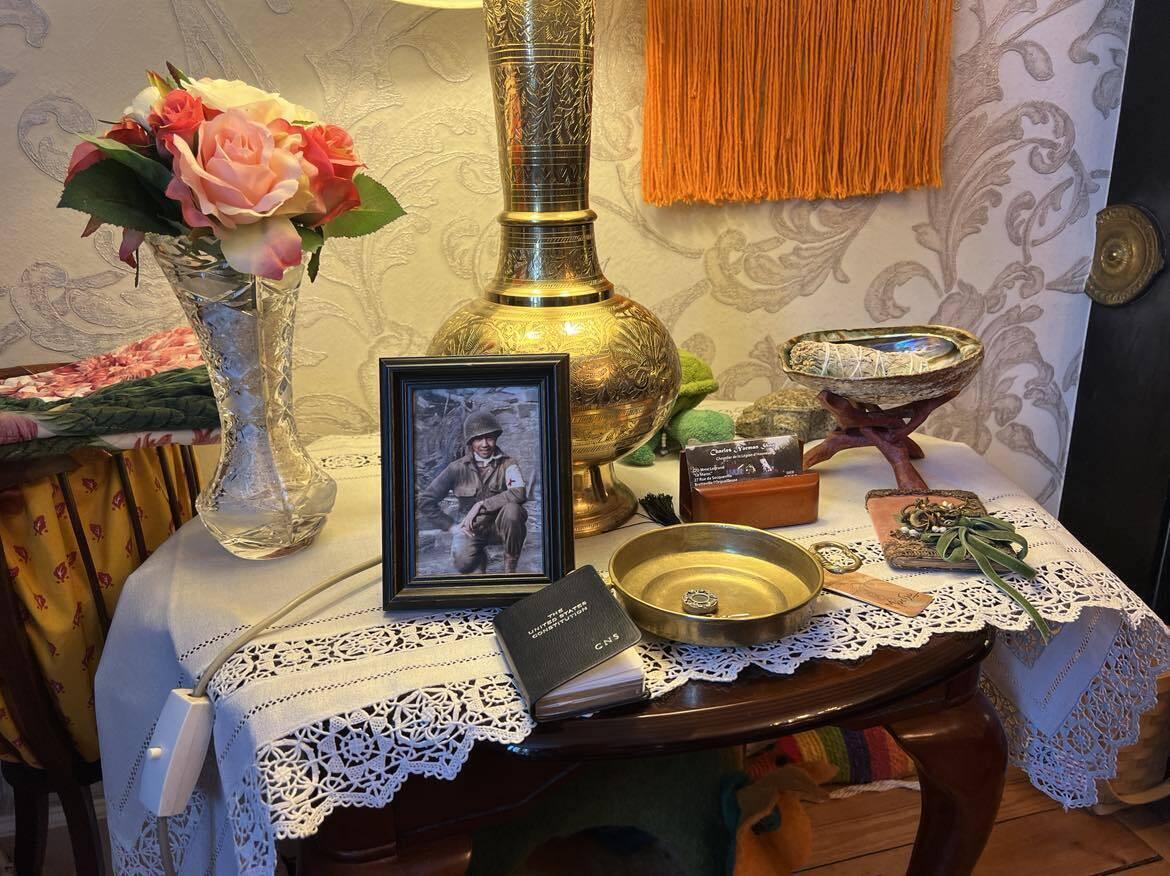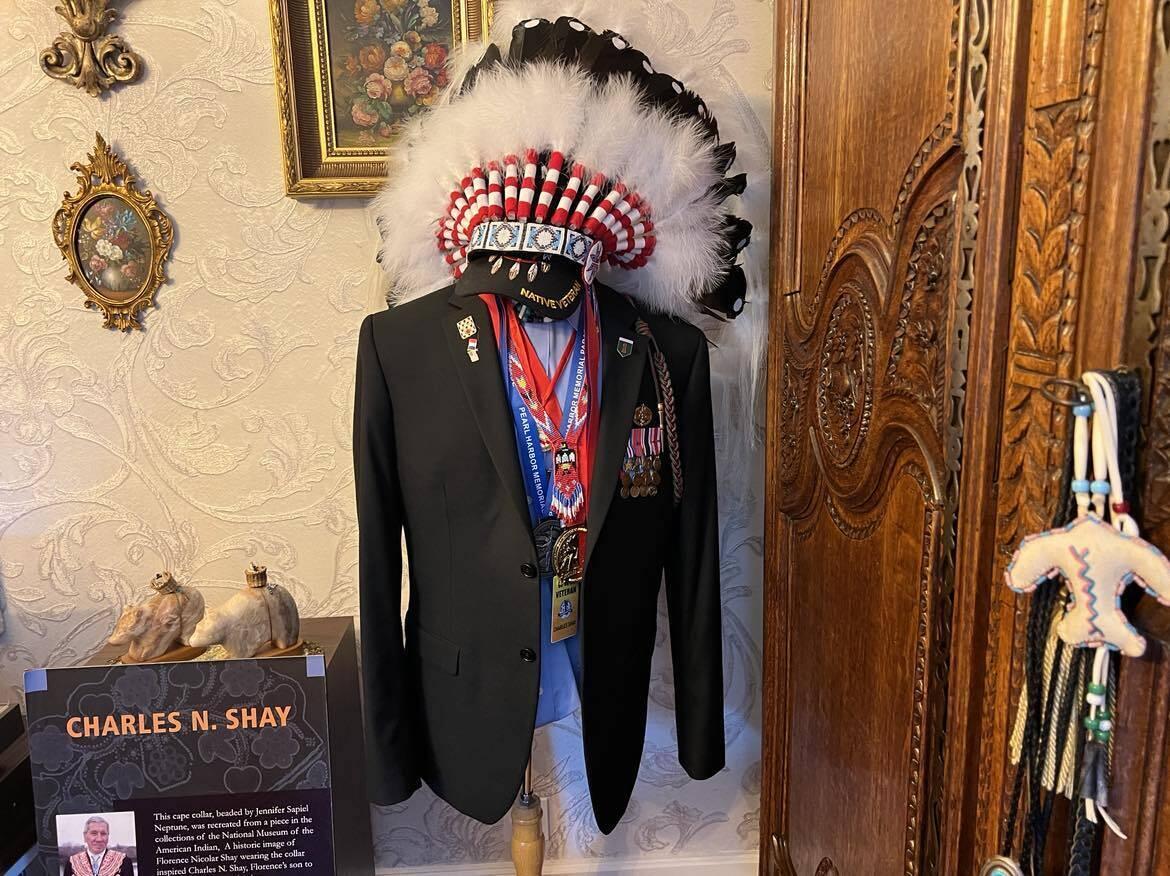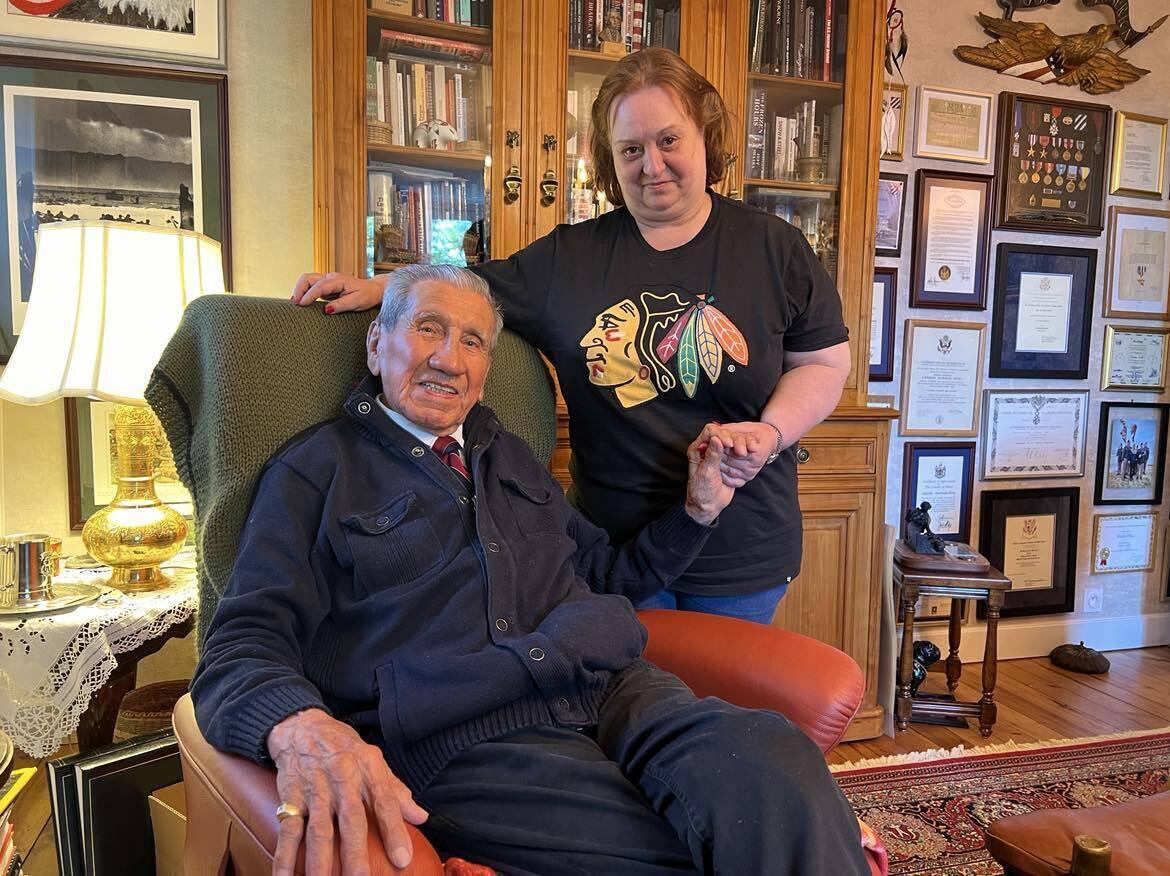In 1944, at the age of 19, Charles Norman Shay was forced to leave his Penobscot tribe to land on the beaches of Normandy as a military nurse. Today, he lives in Normandy. He is the last “D-Day” veteran in the region.
From our special correspondent in Normandy,
“ Come on Utah, come home “. Marie-Pascale Legrand calls her dog as she closes the door, a Native American figure plastered on her black t-shirt. Amid the noise of a creaking wooden staircase, she gives the tour: “ Here you have photos of his family, his mother, his grandparents… » Black and white photos along a wall, on the first floor of this Norman house: the Penobscot tribe. Charles Norman Shay grew up on a reservation in Maine, west of the UNITED STATES. Son of a lawyer and activist for voting rights.
“ My mother always wanted to help the Native Americans, she was not very happy when her four sons went to war », explains the man who is about to blow out his hundredth candle. Lying on his leather sofa, slippers on his feet, amid war memories, he continues: “ At the time, we didn’t have the right to vote in the United States, but we could die for them, because when they came to pick us up to go fight in Europe, we couldn’t refuse, otherwise we were going to prison. »
“ Charles, you are leaving for Europe »
This is how Charles Shay found himself in the American army, at just 20 years old. After his military service, he was assigned the role of military nurse, member of the second infantry battalion: “ I started in an operating room, I thought my life as a soldier was going to be peaceful. But shortly after, I was told: “ Good Charles, you’re going to Europe.” » In 1944, he boarded the Queen Elizabeththe boat which transported the troops, at the time when several American divisions joined England every month to prepare for the ” D Day “. Crossing the Atlantic and training on English soil. “ Then you know what happened, we were selected to land first on Omaha Beach. Initially, it was planned for the 5th, but the weather was not good. Well, the 6th wasn’t much better, but we had to go, because the Germans were starting to understand that we were arriving. »
On June 6, 1944, in the early morning, Charles Norman Shay was one of the first soldiers to set foot in the water of the English Channel, then on the sand of Normandy. Because he is a nurse, he does not carry a weapon. He dodges German bullets. Go headlong. “ I didn’t think about protecting myself. Either I would die; either, I lived, it was destiny. » He saves many soldiers. And loses friends: It was also a nurse, Edward Morozewicz. I was treating a soldier, and I saw him, next to me, shot in the stomach. I tried to help him, but the stomach injury was too serious, I didn’t have the necessary equipment. He died while I was trying to save him. He was a very good friend…. »

War prisoner
Charles Norman Shay set foot in Omaha around 6 a.m. He leaves the beach at 4 p.m. “ I joined the other nurses in my division, in Colleville. I slept a little, because I was very tired. Then we worked in our makeshift hospital set up there. » Charles Norman Shay briefly recounts the rest. A framed photo on a small table in front of him shows him in Aix-en-Provence in October 1944. Smile on his face and a nurse’s red cross around his left arm. On the wall, a letter in a yellowish frame, the one which informed his mother that he had been taken prisoner in Germanyin March 1945. This is what my mother received. Then a few weeks later, I was in front of her, I knocked on the door, she saw me, I thought she was going to faint. »
If Charles can tell his life story by pointing to part of the room, it is because his library has the feel of a museum: “ I brought back everything I could. Everything here is mine. All the medals, all the items. » Many photos of him too, with friends, with relatives of soldiers who died in combat. Dozens of books on the Landings. On the war. The bottle of liquor he loves so much, placed in a metal container in the middle of the coffee table. A large Native American feathered headdress on a wooden rack. Like the link between his two lives. One on a reservation in Maine with the Penobscots. The other in a stone house, in France. Two lives that could never have met. But there was war. The allies. The Landing.

Late memory
It was not until 60 years after the bombs that Charles Norman Shay returned to Normandy. Then this habit of participating in major official ceremonies. Then comes the meeting with Marie-Pascale Legrand. A budding friendship. And a proposal. That of never leaving again. Marie-Pascale Legrand offers the veteran to occupy the upper floor of the house. He accepts. In 2017, he settled down near Caen. Together, they work to bring Native American memory to life in Normandy. “ I brought in one of his nephews, Tim, to make the memorial. He made a turtle, because it is one of their symbols. Then a bust of Charles. It is a monument to all Native Americans. »
There were more than 40,000 Native Americans who landed in June 1944. Before the Charles/Marie-Pascale duo, no ceremony was dedicated to them. Now, Native American memory is recognized in Normandy. Every year, Charles burns tobacco, a traditional rite, to pay homage to them. And even though he was forced to join the army even though he couldn’t vote, even though he stayed in the army for twenty years because after the war he couldn’t find work as an Indian, 80 years later, complaint is not part of his vocabulary. “ We were a group of men, we did what had to be done, all together. There was no individuality, whether we were Native Americans or not, we fought, that’s all, I don’t want to dwell on this subject. »

Two lives linked by war
Today, the turtle, symbol of the Native Americans who liberated Europe, is well placed in Omaha; his sculptor nephew placed a reproduction in Maine, on Charles’ former land. According to the GPS, the two turtles are facing each other. Once again, Charles’ two lives are forever intertwined. “ I’m starting to get tired of talking about all this. It’s from the past. Now, the most important thing is that in a few weeks, I will blow out my hundredth candle and I am still alive [rires]. “. As they leave, Utah, the little dog, barks. Molly, the cat, is hiding. One is named after one of the landing beaches. The other, a Native American first name. Even in the garden, when the dog and the cat play, the two lives of Charles Norman Shay come together. He, the hero of “D-Day”, forcibly enlisted, determined soldier, devoted nurse, guardian of Native American memory. Him, the modest veteran almost a hundred years old. The Native American Veteran. The Norman veteran.
ChronologyThe main dates of the Second World War: 1939-1945
